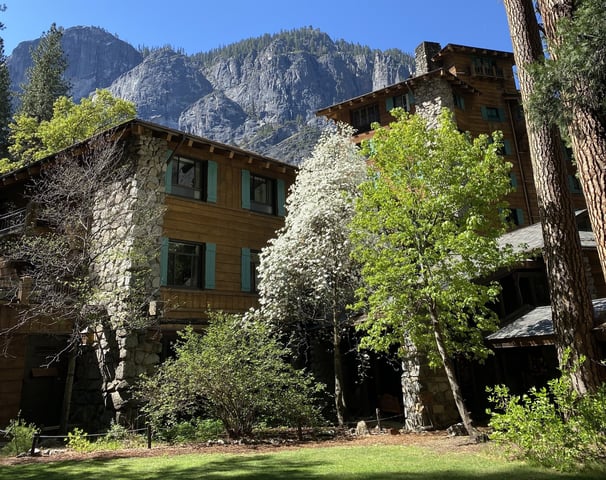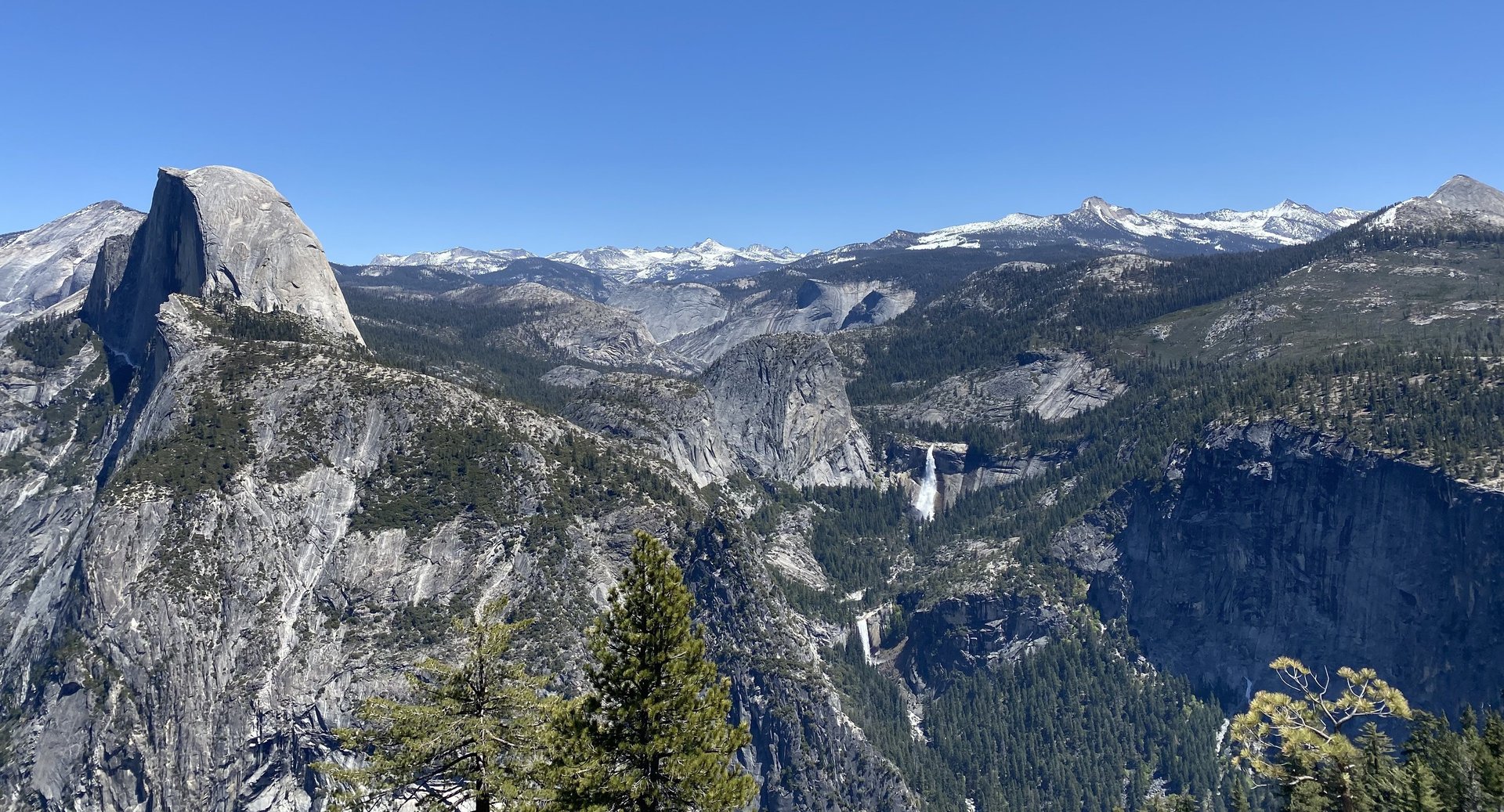
Yosemite National Park
(California)
General info about the park...
Yosemite Valley was the 3rd national park in United States history earning this designation in October of 1890. Famed for its iconic granite mountains, splendid meadows, gushing waterfalls, and ancient sequoia trees, Yosemite National Park is the ultimate embodiment of the high Sierra Mountain range.
With early pioneers such as John Muir and popularized by the rock climbing community, Yosemite is etched into the minds of Californians and all that visit this incredible national park.
Spanning over 750,000 acres across the western-central Sierras and earning World Heritage status in 1984, Yosemite National Park's geology traces its origins back 10 million years. The valley was first discovered by American European settlers in the 1850s but its native origins trace back over 4,000 years. Since achieving its national park status, nearly 95% of this treasured wilderness has been designated & protected.
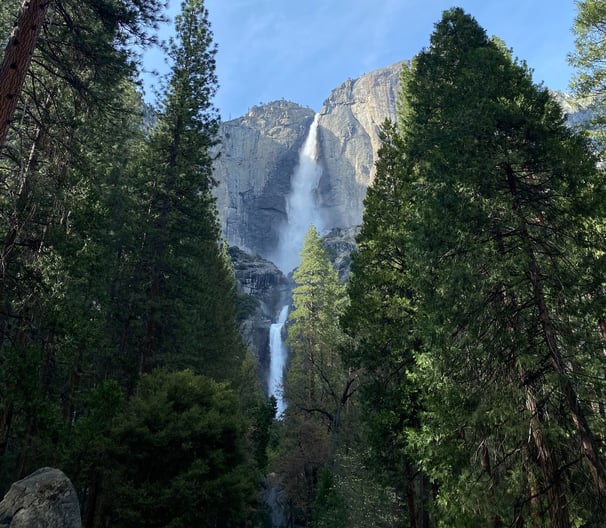

Tunnel View & Wawona Road
This historic site is most visitor's first glimpse into the valley and beloved by first timers as much as loyalists who have been returned for decades. The Wawona Tunnel, completed in 1933, has been serving as the welcome gate for the South Enterance to the park. This tunnel is also notable as it's the longest highway tunnel in the state of California @ 4,233 feet.
After making the stop at this remarkable viewpoint, visitors continue down Wawona Road as tens of millions of people have gone before them into the heart of Yosemite Valley. Wawona Road is 24.5 miles long and also intersects with roads to other park landmarks such as Glacier Point.
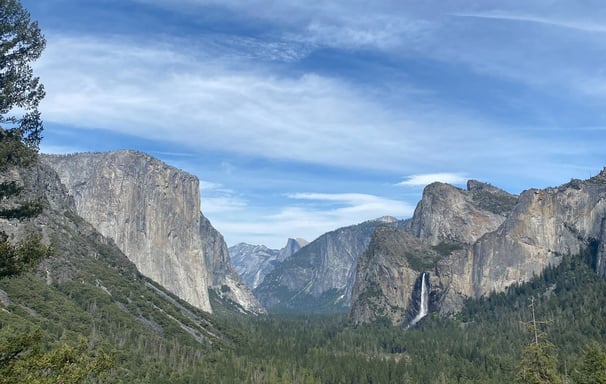

Yosemite Falls
Cascading for an unbelievable 2,400+ feet, this three part waterfall is the tallest in North America and one of the tallest waterfalls in the world. Best viewed in Spring to early Summer when the falls are at their strongest, this impressive natural feature is one of the highlights of Yosemite National Park.
Within a pleasant half mile walk from the trailhead, you can make it the lower falls and for the more adventurous and able bodied, a grueling 6.5 mile hike with 3,200+ feet of altitude gain will take you to the upper falls. Follow proper safety guidelines by staying on marked trails and checking weather conditions. Do not attempt to enter any part of the extremely powerful falls and do not step on slick rocks near the waterfall.
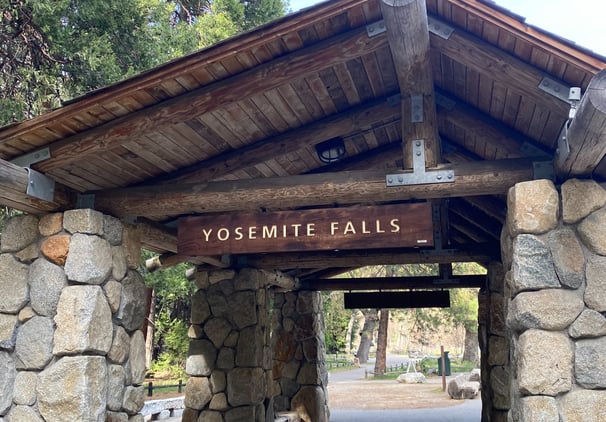

The Mist Trail
This popular trail is the gateway to Vernal and Nevada Falls- two of Yosemite's famous waterfalls. Vernal Fall (the lower of the two waterfalls) will require an approximately 3 mile roundtrip hike with 1,000 feet of elevation gain taking you to a footbridge. Making it to the top of Nevada Falls will require a significantly more intense approximately 7 mile round trip hike where hikers will gain nearly 2,000 feet before descent.
Considered by many as the signature hike in Yosemite, please note this route is heavily trafficked especially during summer months. Both portions of the hike would be rated as moderate and portions of the trails can be slippery due to the waterfalls. As always, it's imperative to maintain good hiking etiquette, bring plenty of water (and food if ascending to Nevada Falls), and stay on the designated / marked trail during your hike.
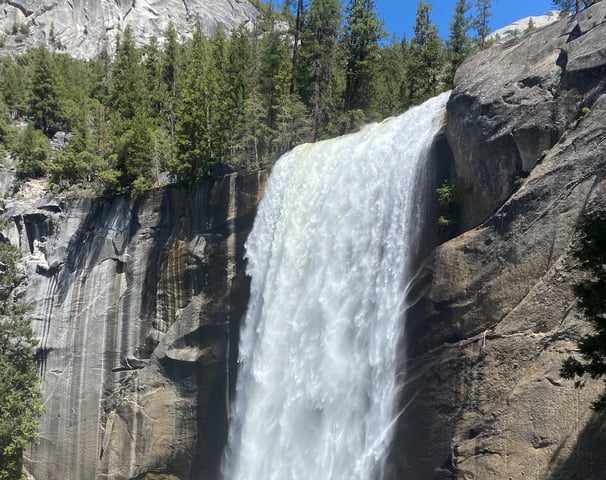

Mirror Lake
This pleasant landmark requires an easy 2 mile roundtrip walk on a paved path originating at shuttle stop #17. It's also possible [and common] to ride bicycles to this peaceful lake.
You can venture out an additional 3 miles for a loop around the backside of the lake on the south side of Tenaya Canyon and alongside the Tenaya Creek. This lake has very little water most months of the year so to see it full, late Spring to early Summer is recommended. In the Winter it might be icy.
The lake sits just over 4,000 feet in elevation and the hike to and around the lake is mostly flat with very gradual slope.
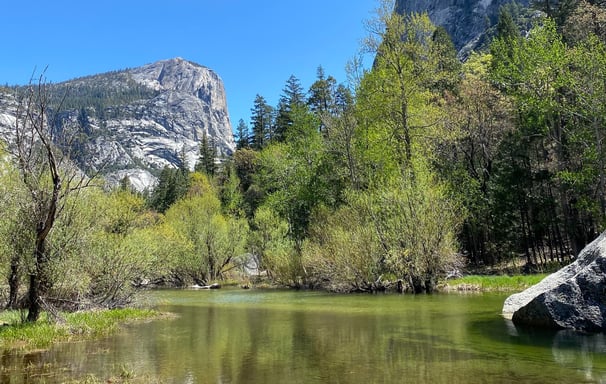

Glacier Point
This incredible, expansive viewpoint at a 7,200+ ft elevation offers unobstructed views into some of Yosemite's and the High Sierra's most notable landmarks including Yosemite Valley, Half Dome, Vernal Falls, Nevada Falls, and Clouds Rest.
Glacier Point Road is the only road that takes you to Glacier Point and is open seasonably during the summer months. It is best to allow an hour or more during the summer months to reach the viewpoint due to congestion / traffic in the park.
Those that take the ride will be rewarded with a memorable vantage point of the highlights of Yosemite National Park.
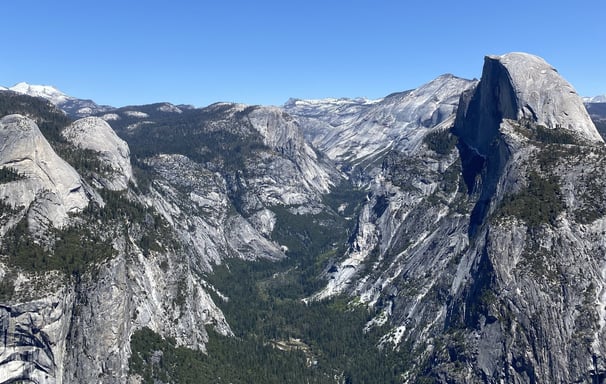

Tuolumne Meadows & Tioga Road
This gorgeous high-elevation meadow (8,600 ft altitude) is accessible seasonally usually late May to early November- you should always check the official national parks website to check seasonal closures, trail conditions, and campsite availability. The meadows see nearly 40 inches of snow annually, but during Spring as the snows begin to melt, Tuolumne is transformed into a rich ecosystem of flora and fauna that delights its visitors.
Tioga Road crosses the southern end of the meadow and runs from Mono Lake east of the park and nearby Mt Whitney to Yosemite Valley - this is remarkably the only road to cross the high Sierras marking the northern end of the largest stretch of inaccessible contiguous wilderness in the continental US.
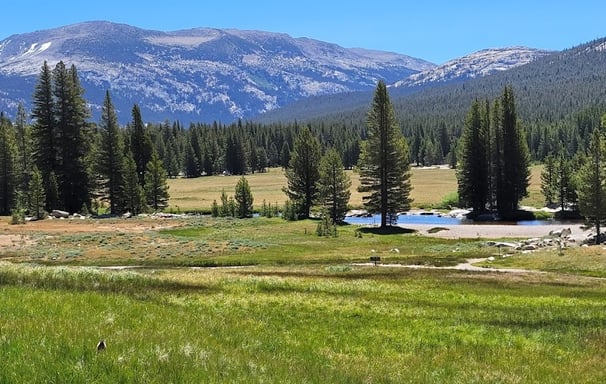

Exploring Yosemite Valley
This enchanting valley is home to the mighty Merced River which offers opportunities for watersports such as kayaking, rafting, and swimming in the summer months. There are some sandy beaches along the river bed and plenty of shade under the trees that grow along the river's edges. Always check the bulletin boards in the park for ranger recommendations as rivers and creeks can have unexpectedly strong currents.
Most visitors choose to explore Yosemite Valley on foot by accessing the well maintained trails to the parks popular natural features. However, you can also bicycle through the valley on the 12+ miles of paved and well marked bike trails.
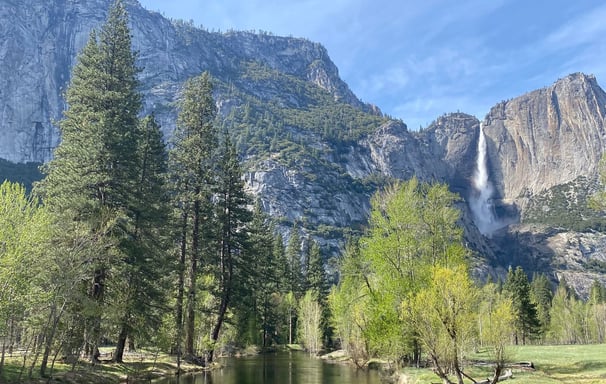

Camping & Lodging
Yosemite offers a multitude of camping and lodging options for all budgets and preferences. There are a dozen traditional campgrounds in the park plus "glamping" in Curry Village. The campgrounds will require a reservation from April to October. https://www.nps.gov/yose/planyourvisit/campgrounds.htm Curry Village is the only campground with showers in the park.
The park is also home to the historic Ahwahnee (4 star hotel), Yosemite Valley Lodge (3 star hotel), and the Wawona Hotel (2 star hotel) for those seeking a more luxurious experience when visiting the park. These lodges within the heart of Yosemite Valley offer amenities such as swimming pools, lounges, gift shops, and have a variety of restaurants. The hotels also have family-friendly activities & events in the summer such as barbecue nights and outdoor music.
